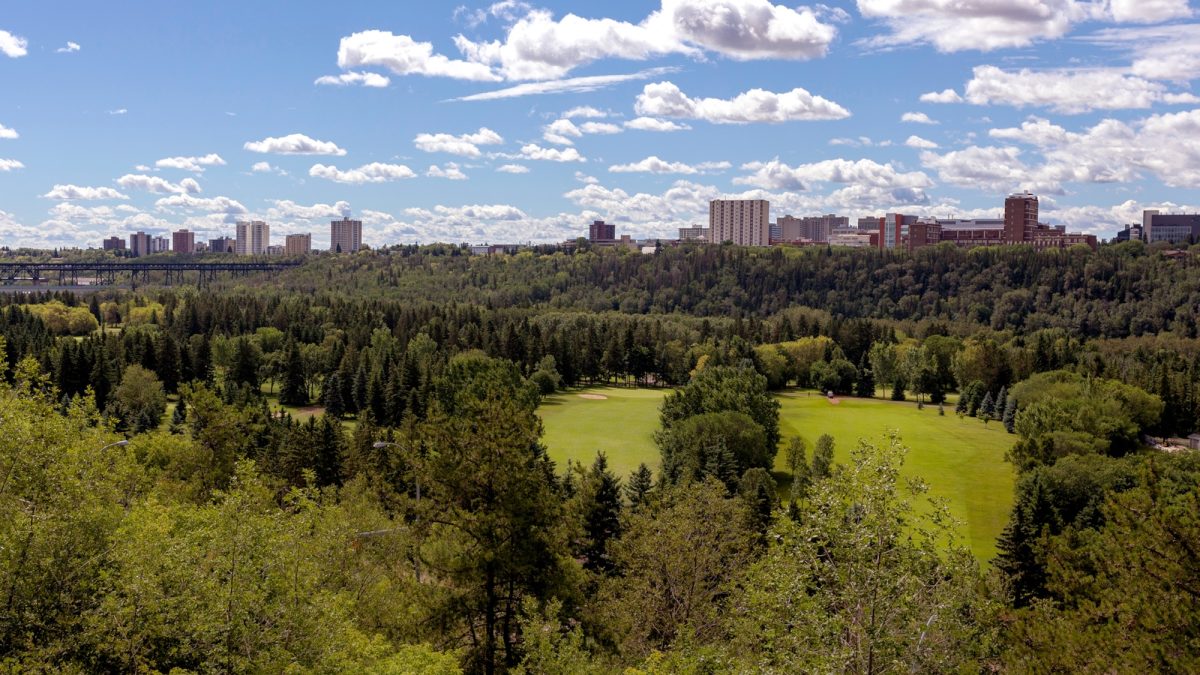Nearly four years ago, in a report commissioned by the City, KPMG recommended that Edmonton get out of the municipal golf course business.
It’s a debate that should be reignited, says Coun. Michael Janz.
“I think we (council) need to have that conversation,” he said.
“We have to ask ourselves, ‘is this the best use of land?’ There is demand for green space in the City, there is a shortage of other sports fields in the city.”
Janz is concerned about the use of pesticides, and the fear that our low winter snowfall rate will have impacts on our ability to use water this summer. According to the City’s stats, we’ve received a total of 190 cm of snow since the beginning of January, 2023 — a total of nearly 15 months. By comparison, we had 201 cm in 2021, and 274 cm in 2020. That melted snow is vital to the water table.
The drought situation is a province-wide concern. Calgary Mayor Jyoti Gondek has already warned her city’s residents that they should brace for water restrictions that could take effect by as early as May.
The City owns six courses, three of which are municipally run — Victoria, Rundle and Riverside — and three which are leased out to third parties — those are Royal Mayfair, Mill Woods and Highlands.
According to a paper by the University of Alberta’s Arshdeep Kaur, the city-owned courses take up 364 hectares of land. That’s a lot of land to maintain — and to water regularly.
Kaur writes that the City should reconsider its use of that land. Not only are there environmental questions, but public-use ones, as well. It takes hours to complete a game of golf, and each hole can take on a maximum of four golfers at at a time. So, the land doesn’t serve a lot of people at one time. It’s an expensive game to play, and, as Kaur writes, the membership skews very white, and very male.
It is crucial to emphasize that municipal golf courses were always intended to operate for the benefit of citizens, rather than to generate profit,” Kaur writes. “However, the nature of golf imposes restrictions on the use of public places, even though a municipality had intended to provide this service to promote accessibility to the public.
“I suggest that municipally owned golf courses which are underperforming should either be repurposed for other active sports or allow open access to the public. The ultimate goal should be to see the public land taken by golf courses revert to the public as a part of the River Valley parks system, easements, or used by another inclusive sport which is open to everybody in the city.”
It’s not that Kaur is anti-golf; it’s that she’s against using publicly owned space for a sport that’s socially divisive.
Janz echoes those thoughts; he said, if the courses were turned into bike paths, green spaces or soccer fields, it’s not like golf is being taken away from the public. There are plenty of private courses in the region. In his mind, this is a case of the City duplicating a service that’s already widely available.
“We’re not talking about taking away three courses, but, instead of there being 80 golf courses in the area, there now may be 77. The sport is still very well-served. It’s not just ‘should the City be in the golf business,’ but what is the opportunity cost of using all of this land in the river valley in this way?”
In September of 2020, KPMG advised the City that it should turn over operation of Rundle, Riverside and Victoria to private operators. The City had commissioned the study because Rundle was underperforming financially, and wanted to see if that course could be off-loaded. KPMG warned that Rundle could not be offloaded on its own; that the only way to operate a private contractor would be to make a package deal out of the courses.
Of course, privatizing the courses is a different discussion than getting rid of them entirely, but for Janz, everything should be on the table.
Royal Mayfair’s lease with the City runs till 2069. Five years ago, the lease was extended from 2051 to 2069 in exchange for $870,000. In return, Mayfair pledged to open the course to at least 7.5 per cent non-member golfers and allow access in the winter to cross-country skiers.
It’s not enough, says Janz.
“William Hawrelak Park had millions of visitors, and now it’s closed for three years. Next door, the Mayfair serves only hundreds of members. Is that a fair land use?”
Mill Woods’ operators had previously paid the City a $75,000 management fee, but according to KPMG’s report, “this operation was no longer financially viable, and the agreement was renegotiated eliminating the fee paid to the City.”
Savvy AF. Blunt AF. Edmonton AF.




